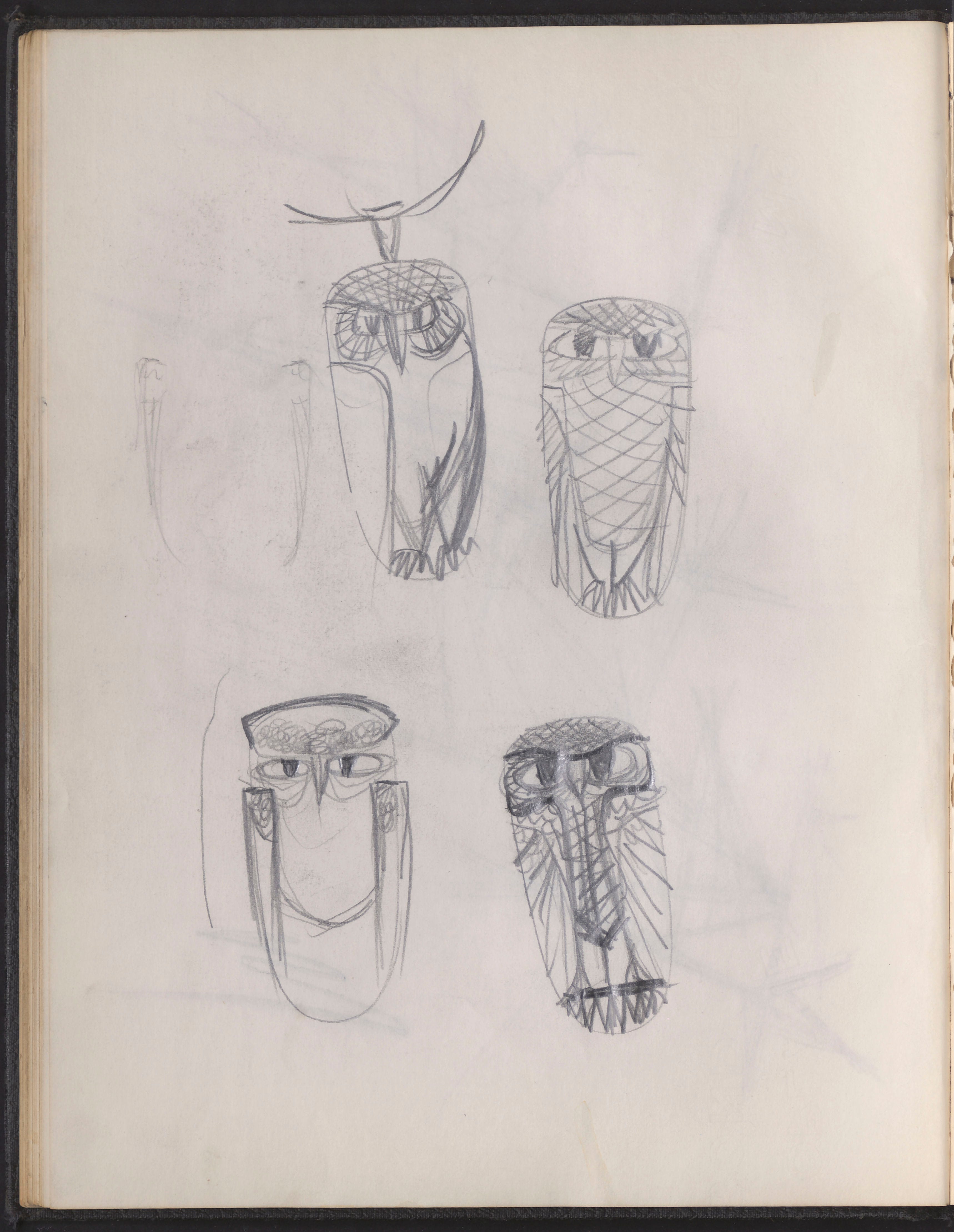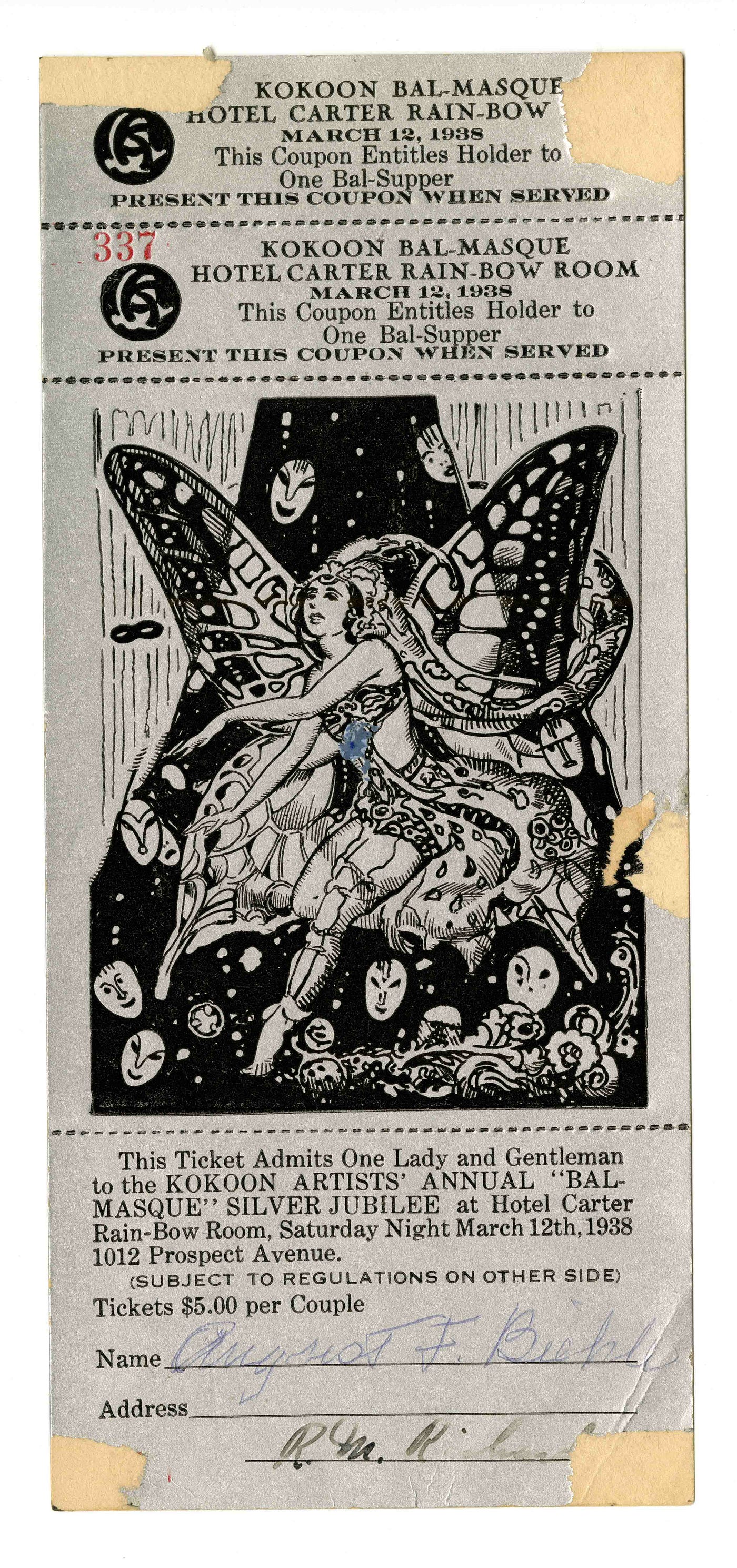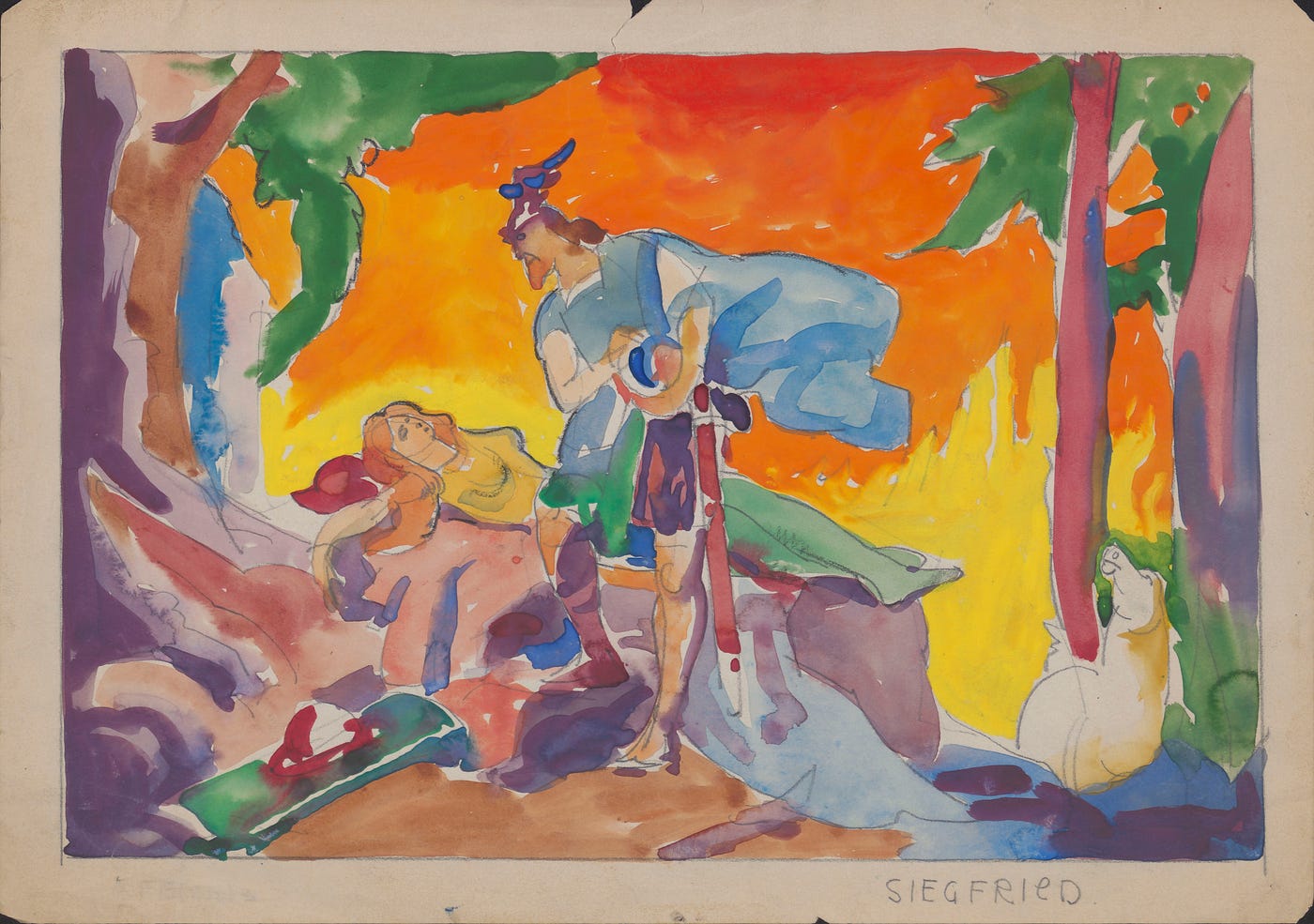By Sara Kunkemueller, Digitization Intern, Ingalls Library and Museum Archives
This summer months, I joined the Ingalls Library and Museum Archives as a digitization intern. My function concerned various projects, from updating metadata to scanning guides for the World wide web Archive, but a lot of my time was focused to digitizing artists’ collections in the archives. The initially supplies I scanned ended up John Paul Miller’s sketchbooks.
Miller (1918–2013) was a renowned Cleveland jeweler. Obtaining graduated from the Cleveland Institute of Art (CIA), he returned immediately after Military service in Globe War II to join the school’s workers as a professor. At the similar time, he began generating items for local jewelry retail outlet Potter & Mellen. Although Miller was trained in industrial design and style and invested his profession focused on jewelry, he also harbored a deep really like for watercolor and generated equally pictures of his travels and a variety of video products. All through his tenure at the CIA, lasting additional than 40 yrs, he taught all these topics. Miller’s function has been acquired by many non-public collectors as nicely as by the Cleveland Museum of Artwork (CMA) and the Renwick Gallery, between many others.
Miller is known for his use of granulation, a procedure most effective recognized from archaeological jewelry. As a result of the granulation method, tiny beads of steel are affixed to a larger sized sort without having soldering. Miller employed granulation to develop extremely difficult surface area textures and styles. Concentrating on each geometric abstractions and real looking animal and insect sorts, Miller’s use of granulation lends his overall body of get the job done an general stylistic coherence, weaving a modernist aesthetic into pure surfaces. His sketchbooks are crammed with repetitive drawings, the place Miller performs with the sort of the granulation pattern. For the reason that Miller’s sketches are comparatively near in dimensions to his final goods, there are several pieces in the CMA’s assortment, in the archives’ May perhaps Exhibit data, and in other artwork galleries that can be matched virtually accurately to these webpages.



Miller’s sketchbooks augment his physique of perform with specific notes on development, which include experimental notes created in the workshop. Many are filled with metallic dust, and even small scraps of discarded gold, suggesting that they lived on his workbench and that types had been subject matter to revision for the duration of output. In a single occasion, Miller wrote out directions for a limited film following the creation of 1 of his items, leaving driving a meticulous record of his procedure. Together with charges and other data, the inside covers often have a list of names or titles indicating which performs of his were commissioned, designed for a particular display, or generated in collection. Within just sketchbook 19, there is also a prolonged handwritten insurance plan appraisal detailing the trivia of a piece’s development, from materials to methods. All of this is pertinent to long term collectors and conservators of Miller’s do the job, but it also preserves his considerable expertise of metalworking and could probably serve as a instructing assist. Miller’s sketchbooks include a wealth of details about his pieces, his teaching methods, and his individual and experienced pursuits.
All 32 of Miller’s sketchbooks are at present available on the CMA Archives’ electronic collections. Also readily available to view are detailed renderings of his rings and pendants, photographs from his trips to California and Antarctica, and photos of his performs from the Could Display assortment.
The remainder of my internship targeted on the archives’ August F. Biehle Selection, composed mainly of sketch elements relating to a variety of media and jobs through Biehle’s prolific occupation. A son of German immigrant and ornamental artist August Biehle Sr. (also represented in the electronic archives), Biehle (1885–1979) was a Clevelander who contributed immensely to the city’s booming creative character in the early 20th century. Following completing his art education in Germany, Biehle returned to Cleveland just as it was achieving its peak of inventive innovation and commenced functioning at the Otis Lithograph Organization. Around the training course of his occupation, he produced extraordinary ads, murals, and paintings and grew to become just one of the most prominent Cleveland university artists.
Biehle was also a member of the city’s preeminent eclectic art corporation, the Kokoon Arts Club. He introduced with him both artistic talent and inspiration, owning considered an influential exhibition of Der Blaue Reiter (The Blue Rider), a German Expressionist team, in Munich in 1912. This informed Biehle’s possess modernist will work and, in switch, proved to be a stylistic influence for other club users. The archives’ assortment has a quantity of Kokoon Club objects, such as posters for club occasions, publication supplies, and ticket patterns for the club’s well known and lascivious balls. The Kokoon Club authorized Biehle to experiment with his official artistic teaching, and the conversation among the club’s flourishing modernists encouraged him to delve into a wide range of kinds, such as the producing Art Deco and Cubism actions.

Of unique take note in the Biehle assortment are sketch products relating to murals he developed for several notorious structures throughout the town, together with the Kokoon Club, the Hofbräuhaus, and Herman Pirchner’s Alpine Village Theatre Cafe. These mural sketches, usually rendered loosely in gouache on paper or board, are hanging not only simply because of their magnificence but also due to the fact extremely few visual data of the murals keep on being. The Kokoon club, for instance, showcased a number of Biehle will work on its walls in the course of its heyday. Nonetheless, right after the club’s drop and disbandment in 1956, Biehle’s murals had been demolished with the making. This is also accurate of his comprehensive work in Pirchner’s Alpine Village, notably Biehle’s depictions of fantastical scenes and traditional times from opera and theater. His influence extended to the Eldorado Club earlier mentioned the cafe, where by Pirchner hosted popular company. In 1996, nevertheless, that structure was razed as very well. When there are some photographic documents made up of Biehle’s demolished mural functions, they are generally concentrated on culture events and the folks who frequented the areas rather than on the art itself. The sketch renderings of Biehle’s murals are some of the most effective remaining documentation of his existence all over influential buildings in the metropolis.

Over and above Cleveland, Biehle represents a terrific encapsulation of the explosion of artistic innovation in the early 20th century. Stylistically adventurous, Biehle’s interests shifted over the class of his profession. He was a talented ornamental artist, acquiring apprenticed under his father, and his lithographs had been in direct dialogue with other crucial advertisers of his age. Biehle’s professional is effective consist of great studies of his peers’ creations, these as numerous layouts for the Arrow Collar adverts that produced American artist Joseph Christian Leyendecker (1874–1951) famous, as perfectly as a number of observational scientific tests that present the depth of his official teaching. Biehle’s prints ended up at the forefront of the change from Artwork Nouveau to Artwork Deco. In the later on parts of Biehle’s job, his paintings took on a putting Cubist style and were imbued with the dynamism of Futurism. His many talents make him an superb illustration of the toughness of Cleveland’s inventive scene at its peak.
Biehle’s other function consists of a selection of colorful painted landscapes impressed by Cubism. The CMA holds in its collection one this kind of painting as effectively as works on paper by the artist. To see the Biehle assortment on the net, remember to take a look at https://digitalarchives.clevelandart.org/digital/collection/p17142coll15.


More Stories
Do the Opposite with Your Blog and Newsletter
Curator at Large: Four artists to look out for this February
Amsterdame campaign | Communication Arts